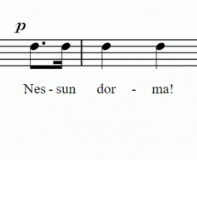Sravakayana
-
Recently Browsing 0 members
- No registered users viewing this page.
-
Topics
-
-
Popular Contributors
-
-
Latest posts...
-
227
-
6,681
-
26
Analysis Trump’s 50-Day Pause: Russia’s Green Light for Ukraine Push
I have to agree on this one. NATO could have ended this war by giving a lot more help and weapons to Ukraine at an early stage. But have in mind, that Russia has threatened with use of nuclear weapons numerous times, and Europe and the US were threading on uncertain ground here. They were not aligned and working together either, like they are now. Time and continued Russian threats have forced Europe to react, and that has taken time. And now the nuclear threats are no longer seen as real, or something to worry about anymore, just desperate words from a desperate inner circle of war criminals at Kremlin. -
95
The face of Dem lunatics …
Try to show some compassion, it must be pretty traumatic to be dedicated to a saviour who then publicly denounces his faithful as "bad people,"stupid people" etc. But the MAGA faithful might not ever hear about it, as it is not being reported in the Fox bubble. https://apnews.com/video/trump-slams-his-own-supporters-as-stupid-people-for-falling-for-what-he-calls-the-epstein-hoax-cfd1ccc177d44729a6a076e9ec41b438 It will be a new experience for many, as MAGA doesn't do compassion. -
4
Is Tax my Responsibility, can my UK company ask to pay UK tax?
Interesting, thanks. Even if I provide an NT code and proof of paying tax in Thailand? -
52
Economy Thailand's Digital Baht Plan Targets Big-Spending Tourists
Do you need a Thai bank account, which tourists can't get, to "cash out" Bitcoin?
-
-
Popular in The Pub

.thumb.jpeg.d2d19a66404642fd9ff62d6262fd153e.jpeg)








Recommended Posts
Create an account or sign in to comment
You need to be a member in order to leave a comment
Create an account
Sign up for a new account in our community. It's easy!
Register a new accountSign in
Already have an account? Sign in here.
Sign In Now